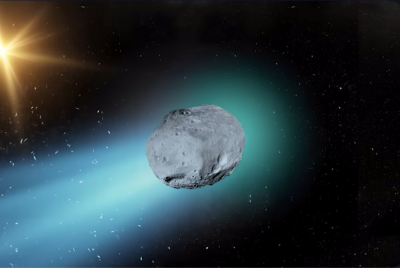Signal from Rosetta Space Probe Returns to ESA
After a 10-year journey, Europe's Rosetta spacecraft ended its hibernation on Monday (January 20) when it returned a signal send out by the ESA (European Space Agency) mission control in Darmstadt at 1000GMT.
After the successful waking-up, ESA (European Space Agency) tweeted "Hello, world!", mimicking the signal sent back from deep space.
The operations manager of the Rosetta probe, Andrea Accomazzo, was jubilant and hugged and cheered with his colleagues after hours of anxious waiting.
"We made it!" he beamed into the camera, "We can definitively see the signal from Rosetta. It's up there, you can see it on the screen. There is a big success for everybody. Now it's up to us to drive it to the comet."
Rosetta's on-board alarm clock was due to go off at 1000 GMT, but it took the spacecraft about seven hours to warm up its star tracking navigation gear, fire up rocket thrusters to slow its spin, turn on its transmitter and beam a message back to Earth, the European Space Agency said.
The probe, presently located about 500 million miles from Earth and just shy of Jupiter's orbit, is so far away that its radio transmissions, travelling at the speed of light, will take 45 minutes to reach listening stations in California and Australia.
The spacecraft, which carries a 100 kg lander called Philae, has been hibernating for most of the past three years to save power.
Unlike previous comet probes, Rosetta won't just sail by. The spacecraft is designed to put itself into orbit around 67P for more than a year of close-up studies.
One of Rosetta's first tasks will be to scout for a suitable landing location for its piggyback-riding Philae probe. Scientists are particularly keen to conduct organic chemistry experiments on samples drilled out from inside the comet's body.
Presented by Adam Justice
© Copyright IBTimes 2025. All rights reserved.






















